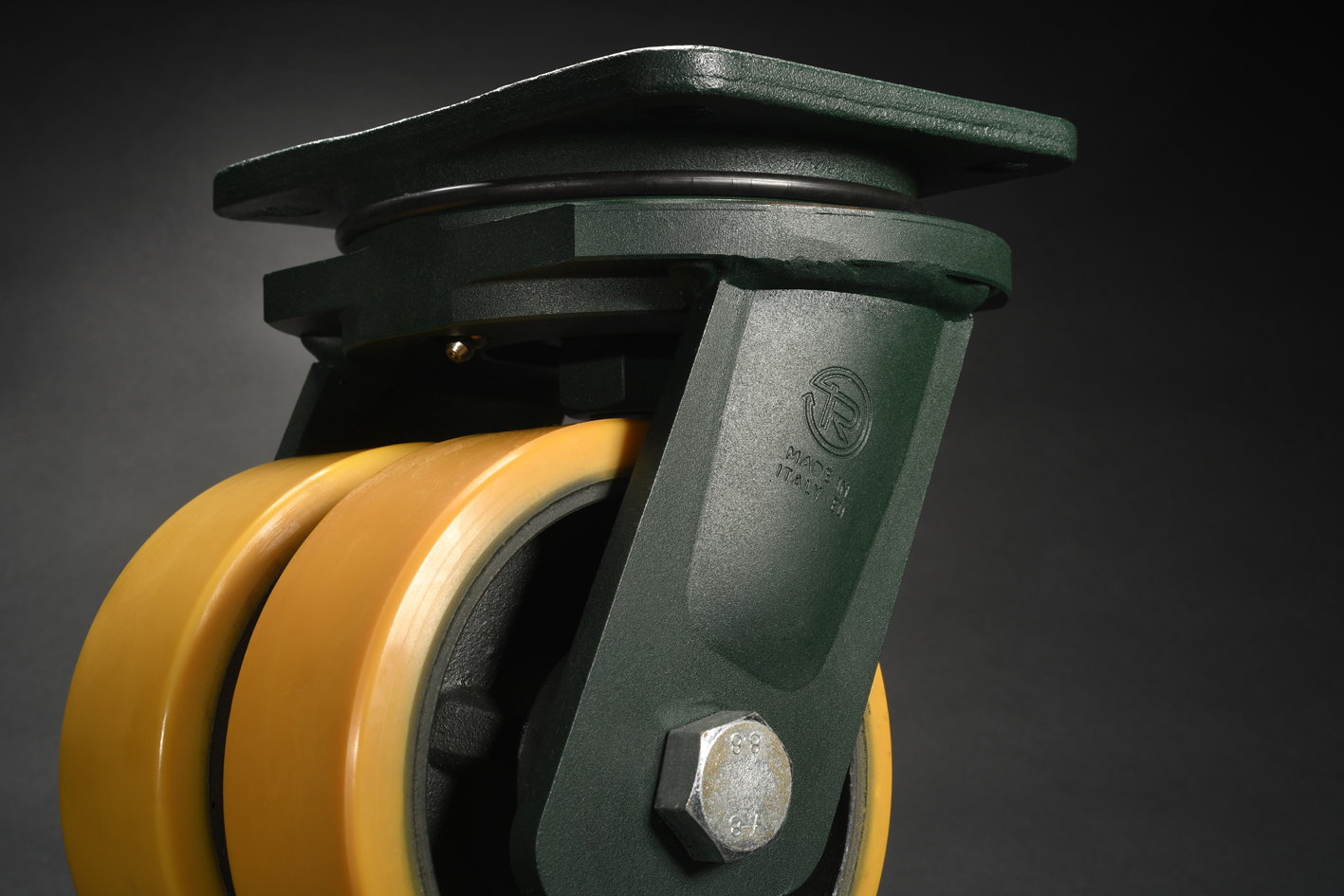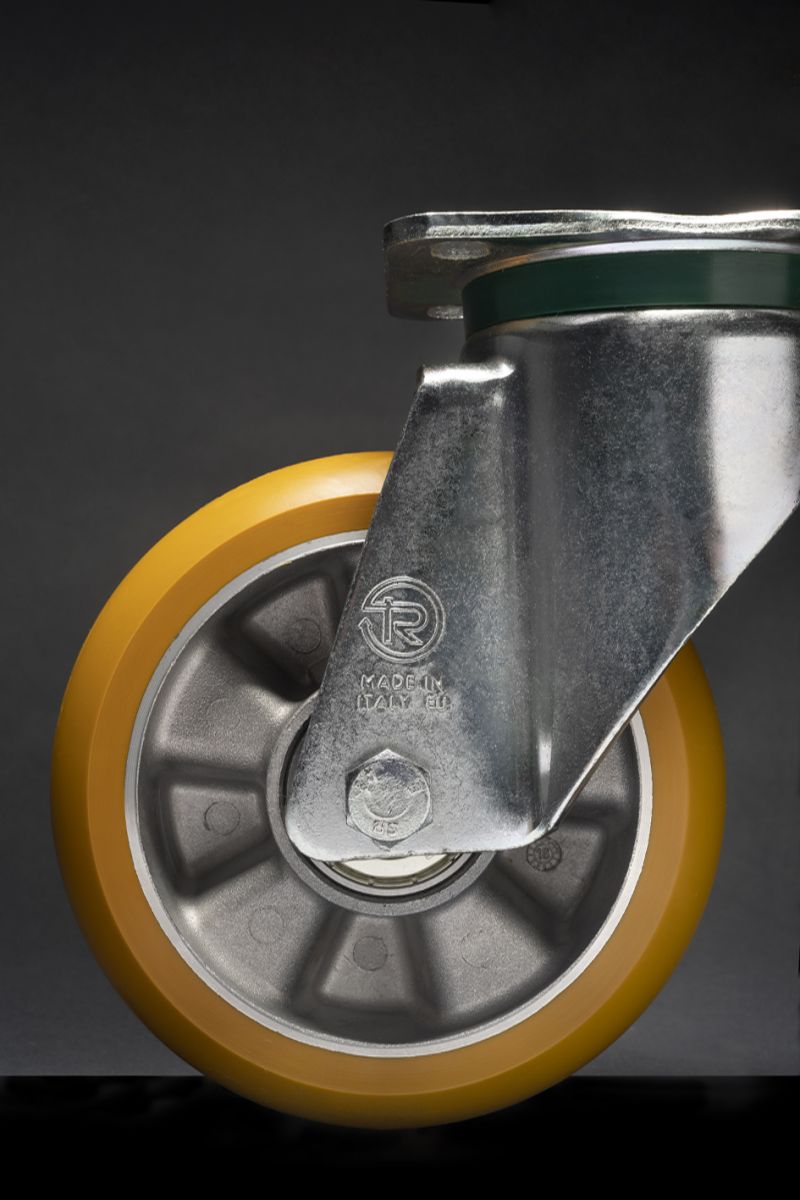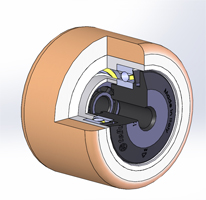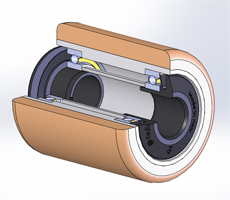07
Sep
The expert responds: frequently asked questions about industrial wheels
Contents
-
Introduction
-
What is a wheel loading capacity?
-
Is it possible to convert daN into kg?
-
Why are there two loading capacity values - 4 and 6 km/h - for some wheels in the Iberruedas catalogue?
-
What is the static load of a wheel?
-
What is the rolling resistance of a wheel?
-
Why do Vulkollan® wheels sometimes change colour?
-
What is and which is the function of the directional lock?
-
What is and which is the function of the foot protection?
Introduction
The major companies that manufacture industrial wheels and their castors receive hundreds of questions from customers and prospects every year to receive advice in this specific area.
This article collects the main requests for information received from the global market to which Iberruedas experts provide the necessary insights.
Frequently asked questions about industrial wheels
Let’s start by saying that the frequently asked questions about industrial wheels concern a specific application.
Most of the time, the customer writes or calls the company with a question on a real need: “a certain trolley must carry “x” kilogrammes and needs to be handled in a certain way, which wheel do you recommend?”
Obviously, the expert responds precisely to these questions. But, to speed up the transmission of information, we have tried to summarise the main concepts, so that they can always be consulted by the majority of potential users.
What is a wheel loading capacity?
The dynamic loading capacity is the value (expressed in daN) of the maximum load that can be borne by a moving wheel. With regard to industrial wheels, this value is determined in compliance with standards ISO 22883 (manual handling) and ISO 22884 (mechanical handling).
Is it possible to convert daN into kg?
The daN-Kg ratio is approximately 1:1. So a wheel with a loading capacity of 150 daN is able to bear a load of approx. 150 kg.
Why are there two loading capacity values - 4 and 6 km/h - for some wheels in the Iberruedas catalogue?
Because, with reference to wheels potentially suitable also for towed handling, we indicate both the loading capacity for manual handling, defined according to standard ISO 22883, and the loading capacity for mechanical handling at 6 km/h, defined according to standard ISO 22884 (part A).
What is the static load of a wheel?
It is the maximum load (expressed in daN) that can be borne by a stationary industrial wheel without suffering any deformation that may affect its correct operation. It can be useful to evaluate which wheel to use in case of applications requiring the occasional handling of trolleys or machines.
The rolling resistance is the value (expressed in daN) of the maximum load which can be applied to a single wheel to move it at the constant speed of 4 km/h, with a traction or pushing force equal to 5 daN (not including start-up force).
The value of 20 daN of traction/thrust force (corresponding to 4 wheels) is a recommended limit value for the majority of the adult working population.
Essentially, the greater the rolling resistance of a wheel is, the less effort the user puts into handling the trolley/equipment.
What are the differences between TR polyurethane and Vulkollan®?
These are two polyurethane compounds, both ensuring excellent performance of the industrial wheels for which they are used.
The TR polyurethane has been developed in the TRLab laboratory, has excellent physical and mechanical characteristics, ensuring great resistance to wear, tear and deformation. It is particularly suitable for applications that strongly stress the tread for speeds up to 12 km/h.
Vulkollan®, made under Covestro licence, has even higher elasticity and is the most suitable choice for extremely heavy-duty applications at high speeds (up to 16 km/h).
Why do Vulkollan® wheels sometimes change colour?
Because Vulkollan® is a light-sensitive material and is almost transparent when coming out of the casting plant, while it becomes progressively darker when exposed to the light, until taking a brown colour.
What is and which is the function of the directional lock?
The directional lock is an accessory that can be applied to the swivel castor plate using the screws that secure it to the trolley. Its activation locks the castor rotation in a precise direction, making it fixed.
The device is used on at least two of the four swivel castors of the trolley. This allows the simultaneous towing of several trolleys.
What is and which is the function of the foot protection?
The Iberruedas foot protection is an accessory used to prevent the operator foot crushing during handling of the trolley or machine.
As it is a fixed device, its application ensures constant safety when using the trolley.
It is particularly suitable in case of mixed manual/mechanical handling.
Are you interested in knowing the types of industrial wheels best suited to your specific needs, through a dedicated consultation? Contact our technicians to get a no-obligation consultation specific to your project.





